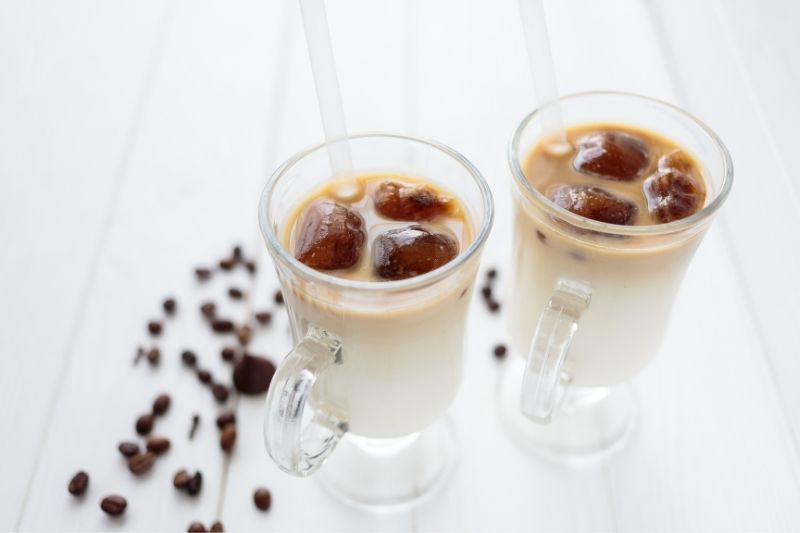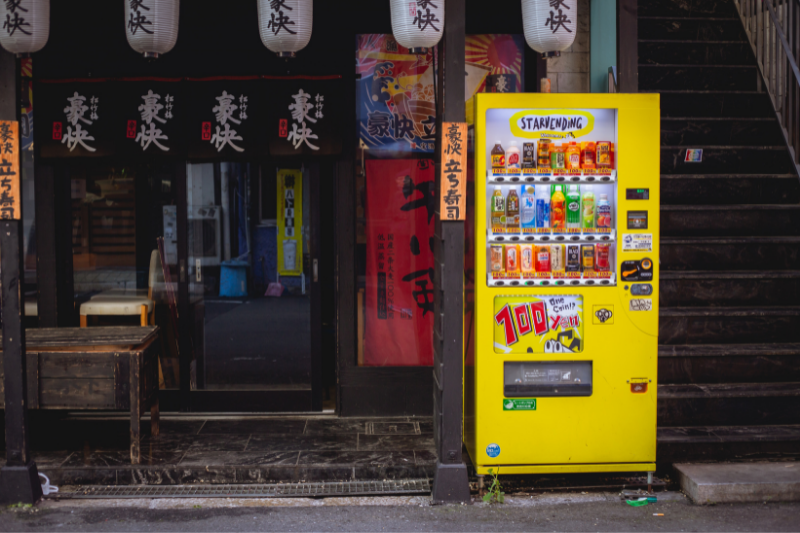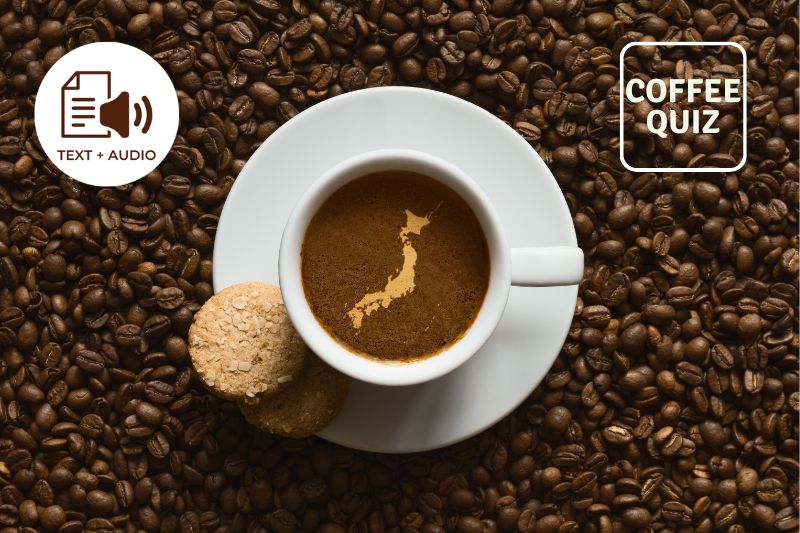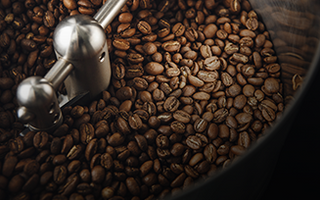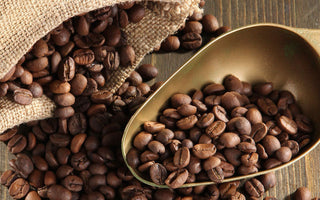Japanese food is known to make great accompaniments for tea, but what about coffee? Coffee culture has been a significant part of the Japanese gourmet world for a long time, and you will be pleasantly surprised to know that Japan has plenty of mouth-watering delicacies that pair perfectly well with coffee. Today, we bring you these Japanese specialties that you can enjoy with your premium coffee next time.

Before we introduce you to each of these items, we want to tell you a little bit about the fascinating concept of food and beverage pairing in Japan. This will let you go beyond our list and have limitless fun pairing up any food and premium coffee to create your very own 'match made in heaven.
The concept of ‘Mari-aaju’(マリアージュ) – the Marriage of food and beverages
There is a word commonly used in Japanese food pairing called ‘Mari-aaju’(マリアージュ); it came from the French word ‘Mariage', which is used to describe ideal matches in the art of food and wine pairing, an art that can also be effectively applied to coffee. As you might have guessed, ‘Mari-aaju' means Marriage. It is applying your instinct and knowledge of the food and premium coffee's characteristics such as aroma, taste, flavor notes, mouthfeel, body, texture, etc. to pair them in a way so that they complement each other harmoniously and highlight the best characteristics of the coffee and the food.
In Japan, if you see how Sake is enjoyed with food, you will see that we drink a little bit of Sake from a small Sake bowl, eat a little bit of complimentary food, and then drink a bit of Sake again. Japanese Sake is usually preferred to have a dry taste, but by eating a small portion of food to 'reset' the dry taste in your mouth, you can appreciate the dryness of the Sake even better on the next sip.
This shows that highlighting and appreciating the unique characteristics of the beverage (in this case, premium coffee) is the essence of Japanese ‘Mari-aaju.’
Matching the body of the coffee with the texture of the food
The ‘body’ of a coffee refers to the weight or viscosity of a coffee that you can feel on your tongue, often described as the ‘mouth feel’. The body of a coffee is dependent on the type of beans, roasting style, and brewing method.
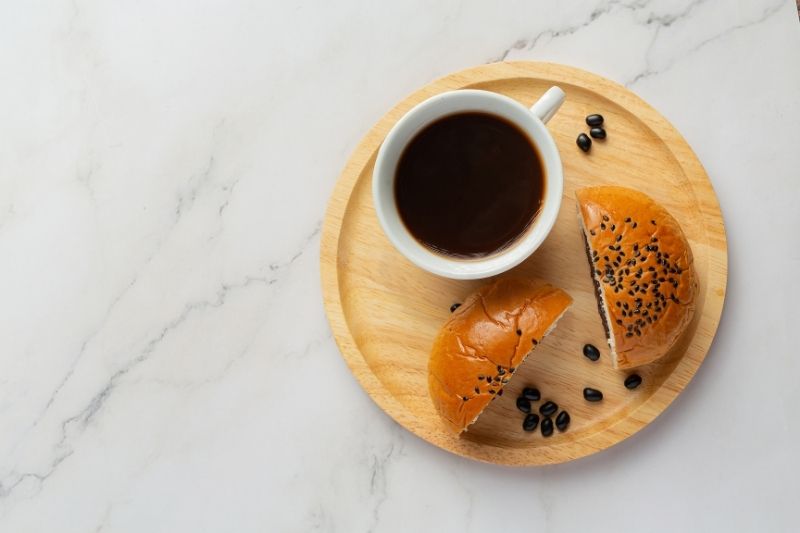
It is important to match this with the texture or ‘volume’ of the food so that one does not win over the other, diminishing the characteristics of the other one.
With fruit tarts and light jelly desserts, pair with a light body coffee
With chocolaty desserts and cheesecakes, pair with a full-body coffee
As a general rule of thumb, if you are pairing with heavy and filling desserts:
- Select a bean with a heavy mouthfeel and depth of flavor: Beans from regions such as Kenya, Bolivia, Indonesia, and Brazil have a fuller bodies. Also, try to look for beans treated with Natural or Honey processes.
- Select darker roasting styles with a more extended development period: g., Vienna Roast, French roast.
- Select a brewing method that gives more ‘body’: Try to increase the TDS (Total Dissolved Solids) in the coffee by taking brewing steps such as using a coarser grind, lengthening the extraction time, using a French press, etc.
Matching the flavor and taste of the coffee to the ingredients of the food
The best thing about premium coffee is that each coffee has a distinct taste, flavor, and aroma. We can use this fact to our advantage by pairing each type of coffee with the type of food with matching tastes and flavors to create a delicious combination. Let's look at some examples:
|
Type of taste and flavor |
Example of food |
Type of coffee to pair with it |
| Citrus | Lemon tart, key lime pie |
Coffee with citrus notes, e.g., Ethiopia, Nicaragua |
| Malic | Cranberry pie |
Coffee with apple-like flavors, e.g., Kenya, Guatemala |
| Lactic | Cheesecake, milky desserts |
Coffee with mild, well-balanced flavors and natural sweetness, e.g., Brazil Yellow Bourbon |
| Chocolate | Chocolate fudge brownies |
Coffee with deep, rich, mellow flavors, e.g., Latin American coffees, Honey/Natural Processed coffee |
| Nutty | Sesame senbei (Japanese rice crackers), Kinako mochi, granola bars |
Coffee with nutty flavors, e.g., Brazilian and Central American coffee |
| Berry | Berry mousse, Anmitsu |
Coffee with wine and berry notes, e.g., Anaerobic processed, African coffee (esp. Ethiopia) |
| Tropical | Pina Colada Trifle, Mango and passion fruit roulade | Coffee with tropical fruity notes, e.g., Papua New Guinea, Costa Rica |
| Tea/Spices | Chai spice shortbreads, Yatsuhashi | Coffee with exotic flavor profiles, e.g., Geisha, India, Java, Ethiopian Harrar |
Now that you have an essential guide on choosing your premium coffee to pair up with your food let us introduce you to some of the best coffee-friendly food from Japan!

Castella
Although Castella was introduced to Japan by Portuguese merchants in the 16th century, it has been loved in Japan for so long that it is considered one of the most popular wagashi (traditional Japanese sweets). Many Japanese artisan sweetshops specialize in crafting their own version of Castella.
Upon the first encounter, Castella might appear like a simple sponge cake but do not be deceived. Its subdued sweetness combined with the goodness of milk and eggs, made even better by its incredibly fluffy and moist texture, make it one of the best treats you could have with your specialty coffee.
Since Castella is light and mildly sweet dessert, it is something you can enjoy any day of the year without making you too full. Also, Castella comes in elegant rectangular slices, so it is easy to serve if you have a spontaneous coffee time with a guest. It is best paired with well-balanced, medium to dark-roasted, medium-bodied coffee with deep flavors.
The most popular Castella flavor is the plain classic one. However, Castella with unique flavors such as brown sugar, matcha green tea powder, honey, etc., are also delicious, so you can try matching different flavors with different coffees.
Ogura Toast
Ogura toast is one of the most iconic foods from Nagoya, and anyone who visits Nagoya or the neighboring areas in the Aichi prefecture does not miss out on trying out this famous food at one of the cafes or Kissaten (traditional Japanese tea and coffee house) in that region.
Ogura toast is made up of a white bread toasted to golden-brown perfection, with a piece of butter melted on top, and then a generous amount of a special jam made of Japanese red Azuki beans called ‘Anko.' Depending on the café, it might also come with a side topping of cold whipped cream.

The sweet and hearty Anko bean paste on the bread, the smell of butter wafting in the air, and the toast with crunchy edges and a fluffy center, finished off with a cup of Sumiyaki (Japanese charcoal roasted) coffee – this ultimate Japanese coffee experience will leave you speechless!
Suppose you happen to fall in love with the Anko paste on Ogura toast. In that case, you can take it to the next level by pairing it with a unique coffee drink called ‘Anko Coffee’ which has Anko paste inside the coffee.
Atsuyaki Tamago Sando
In Japan, you can find many different kinds of ‘Sando', which means sandwich, including even one with fresh fruits and cream inside. All of these sandwiches are worth trying out. Still, one of the most popular and uniquely Japanese Sandwiches is Atsuyaki Tamago Sando, which has a thickly rolled Japanese-style fluffy omelet sandwiched between Japanese white bread. This is a classic item to have with a cup of coffee for breakfast or brunch at a Kissaten or a café.

The egg omelet inside this sandwich is so thick; the sandwich almost looks like it is going to explode. But that is what makes it so good and energizing to have in the morning. The creamy and fluffy omelet with its sweet-savory taste makes this sandwich a highly satisfying accompaniment to a cup of rich, deep-flavored coffee.
Goma Senbei (Japanese rice cracker with sesame seeds)
Osenbei or Japanese rice crackers is one of the most popular snacks in Japan. It has a very distinct texture as it is made with Japanese glutinous rice, the same ingredient used to make Mochi (Japanese sticky rice cake). It has a texture that is a combination of chewy and crunchy, which makes it addictively good.

There are many different kinds of savory and sweet Senbei, all of which are great for your coffee time. However, the one that stands out is the sesame Senbei, which is a Senbei covered in sesame seeds. The sesame seeds give it a special toasty flavor and a delicious nuttiness, making it a great snack to enjoy with coffee.
Anmitsu
Anmitsu is a classic Japanese summer dessert that is not only delicious but is also very beautiful. It is served in a bowl with small cubes of agar jelly, fresh fruit, Anko (sweet Japanese red bean paste), and other ingredients depending on the variation.

Fruity, cool, and sweet, this dessert will keep you happy and rejuvenated even on the hottest summer days. Since it has lots of fruity flavors and real fruits such as cherries, peaches, and pineapples, it will pair very well with fruity coffees such as the ones from Kenya and Ethiopia.
Final Words
I hope you enjoyed my top five Japanese food that goes well with premium coffee. However, I would also recommend you to find your best pairings by matching your favorite treats with different types of premium coffee. You might even discover a great food-coffee pairing that no one has ever tried before!
This post about Top 5 Japanese Food that pairs well with premium coffee was first published in 2021. We added the audio of this blog in 2022 just for you.
• Disclosure: I only recommend products I would use myself, and all opinions expressed here are my
own. This post may contain affiliate links that I may earn a small commission at no additional cost to you.
The commission also supports us in producing better content when you buy through our site links.
Thanks for your support.
- Kei and Team at Japanese Coffee Co.
Get Free Bonus Books

Sign up for free to the Coffee Club to get advice and exclusive articles about how to choose Japanese Coffee, and tips, tricks, and recipes for enjoying Japanese coffee.
About the author
Kei Nishida
Author, CEO Dream of Japan
Certification: PMP, BS in Computer Science
Education: Western Washington University
Kei Nishida is a passionate Japanese tea and coffee connoisseur, writer, and the founder and CEO of Japanese Coffee Co. and Japanese Green Tea Co., both part of Dream of Japan.
His journey began with a mission to introduce the world to the unparalleled quality of Japanese green tea. Through Japanese Green Tea Co., he established the only company that sources premium tea grown in nutrient-rich sugarcane soil—an innovation that led to multiple Global Tea Champion awards.
Building on this success and his passion for Japanese craftsmanship, Kei expanded into the world of coffee, pioneering the launch of Japanese Coffee Co., the first company to bring Sumiyaki charcoal-roasted coffee to a global audience. His dedication to authenticity and quality ensures that this traditional Japanese roasting method, once a well-kept secret, is now enjoyed worldwide.
Beyond tea and coffee, Kei has also introduced Japan’s legendary craftsmanship to the world through Japanese Knife Co., making handmade katana-style knives—crafted by a renowned katana maker—available outside Japan for the first time.
Kei’s journey continues as he seeks out and shares the hidden treasures of Japan, one cup and one blade at a time.
Learn more about Kei




